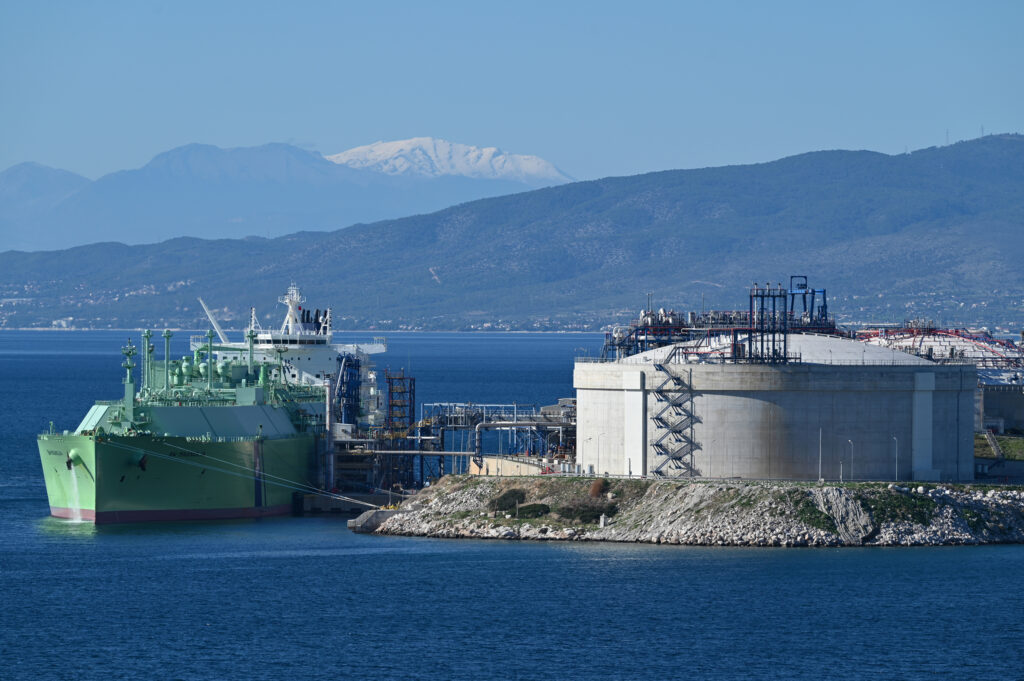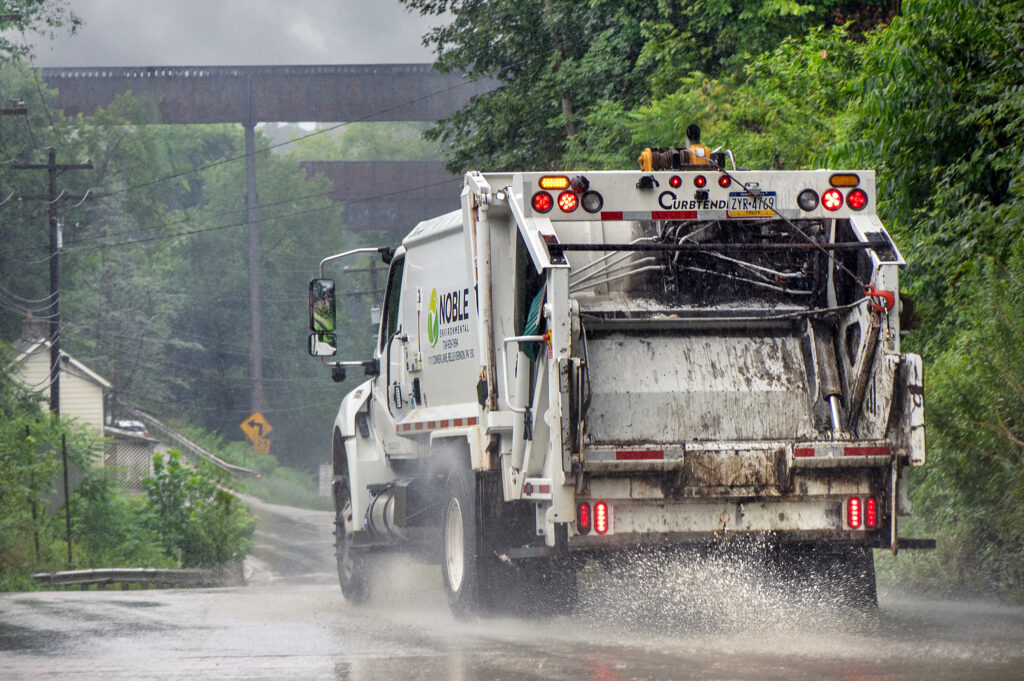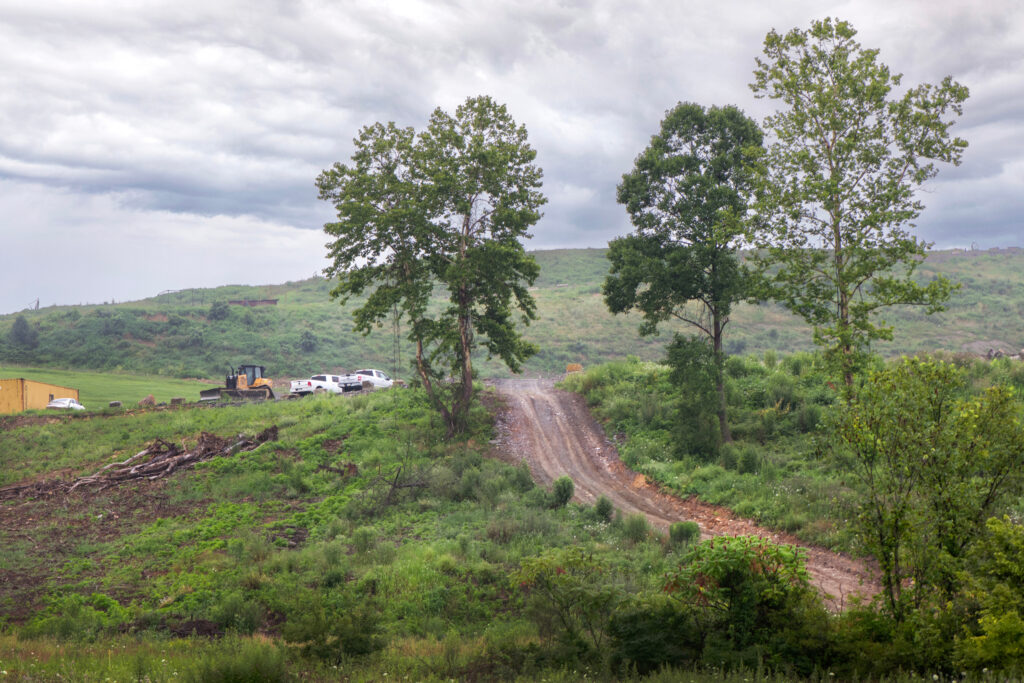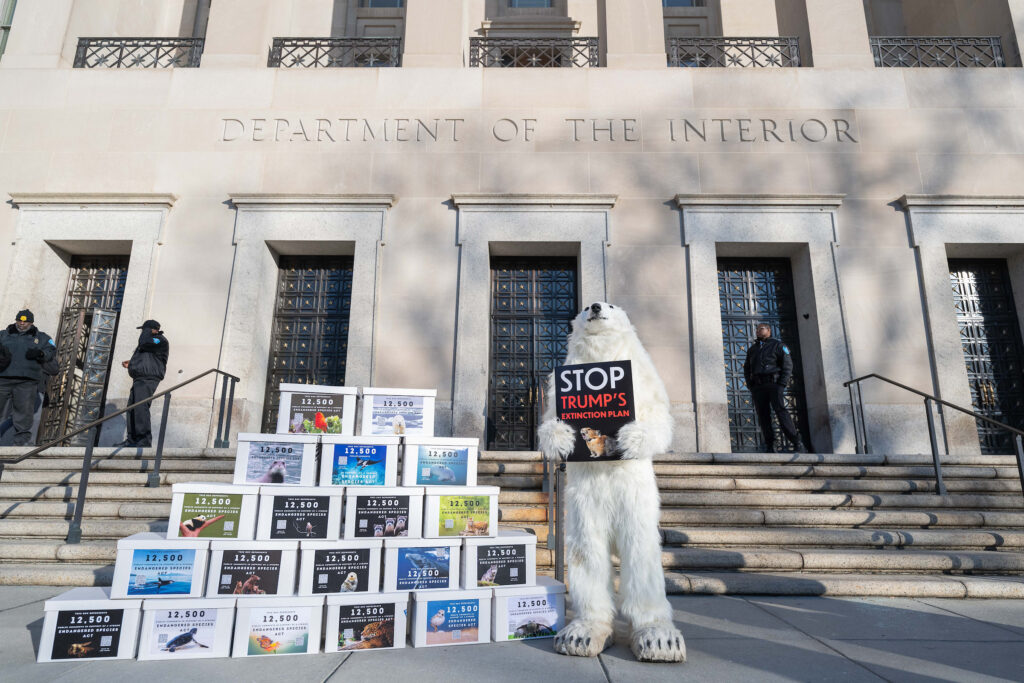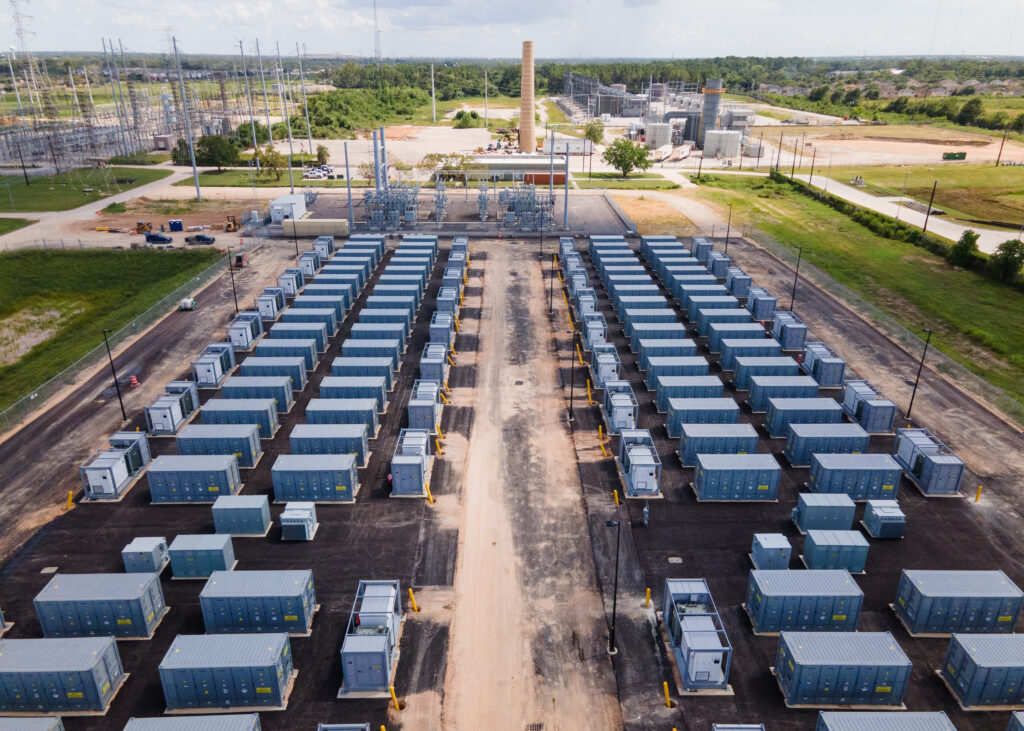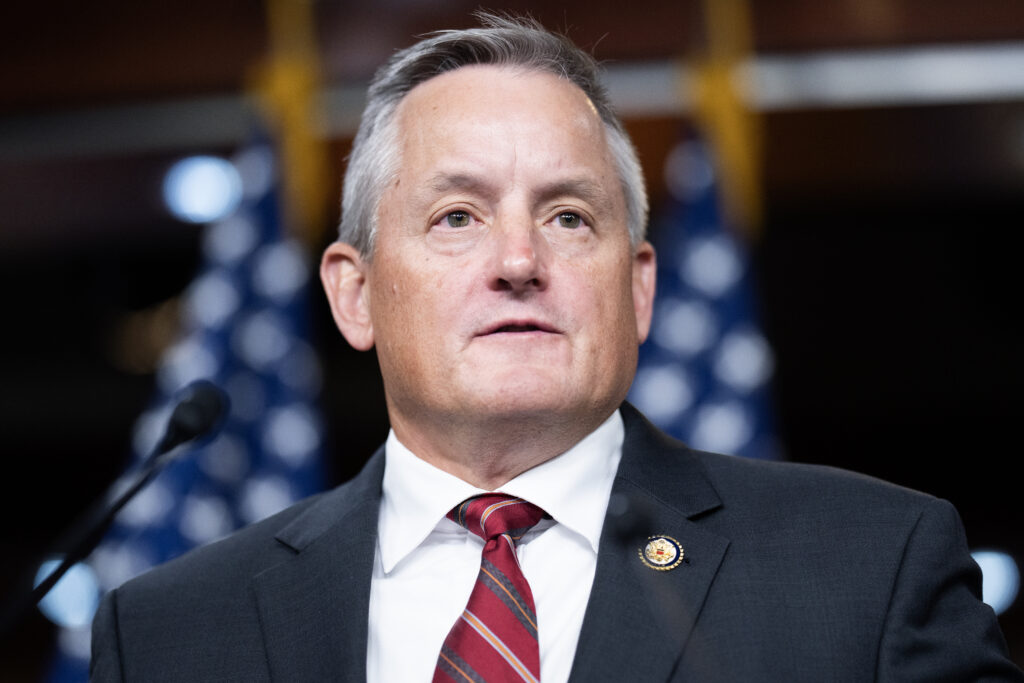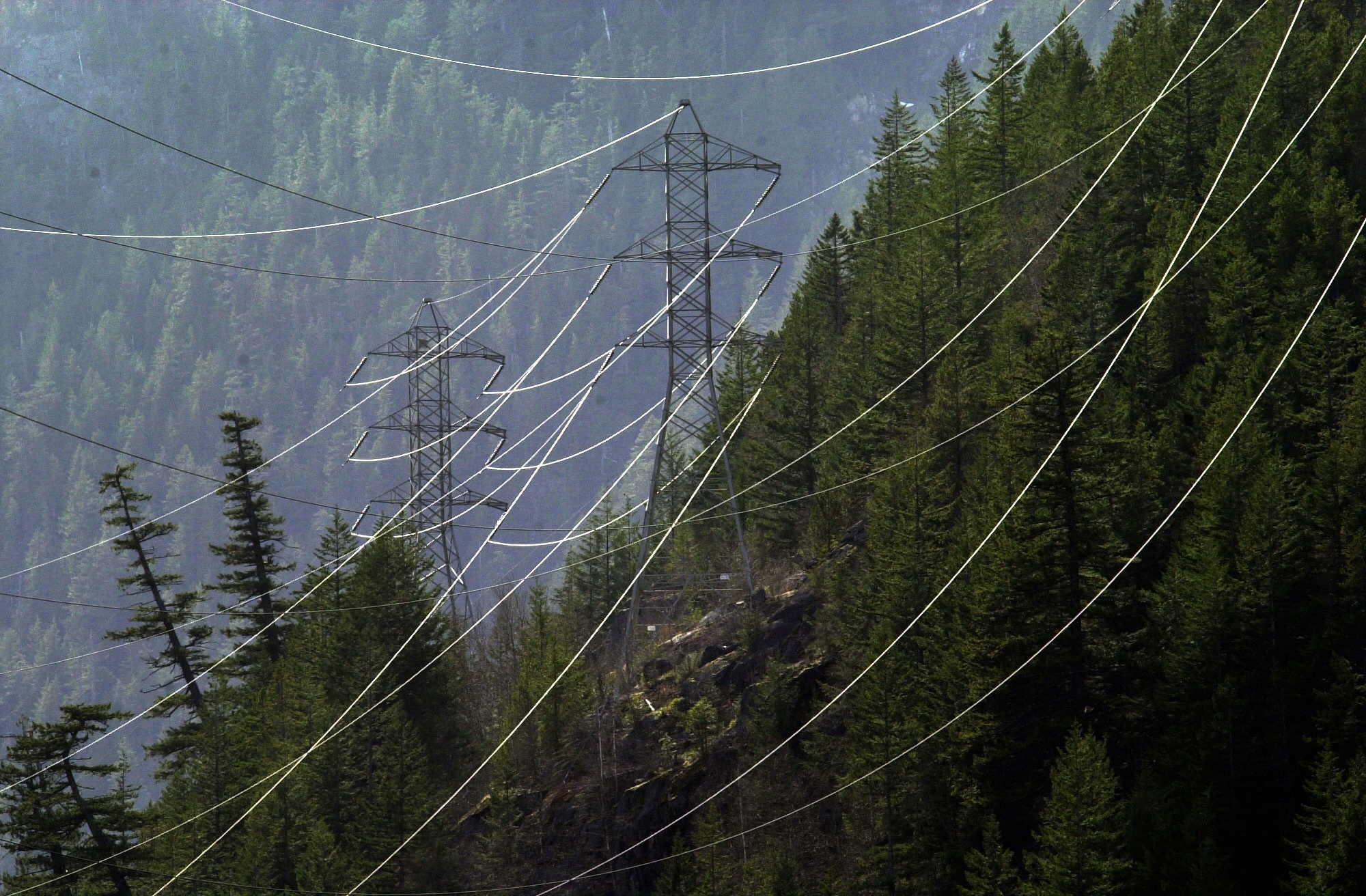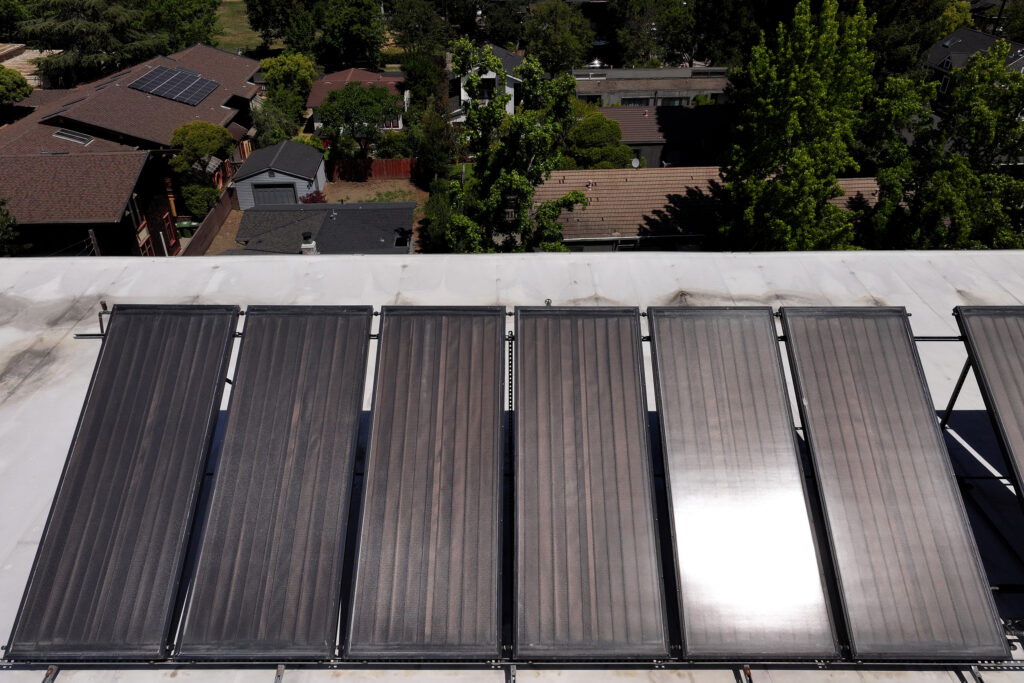DENVER—Few states over the past decade have been as progressive on climate action as Colorado, which is endeavoring to reduce its greenhouse gas emissions by 50 percent by 2030, and is on track to reach that goal.
The state has passed dozens of pieces of legislation and implemented new rules in state agencies to combat global warming. It has toughened oil and gas regulations and mandated utilities to expand renewable energy production. State legislation has reigned in suburban sprawl in favor of denser and greener affordable housing, and expanded public transit.
During the administration of former President Joe Biden, Colorado’s climate goals aligned with the federal government for the first time, and assistance from Washington, D.C. gave a big boost to the state’s efforts. Billions of dollars flooded into state and federal agencies in Colorado, as well as to local utilities and businesses, small and large municipalities and even homeowners to expand the state’s renewable energy portfolio, grow its networks of charging stations for electric vehicles, protect communities from drought and wildfire and lower electric bills.
But those days are largely over, with the Trump administration pausing billions in funding for addressing climate change and laying off thousands of workers critical to that work.
We’re hiring!
Please take a look at the new openings in our newsroom.
See jobs
Now, Colorado will have to address the climate crisis largely on its own, a monumental task state officials say they have tackled before and are ready to take on again.
“We are fighting every day in Colorado for cleaner air and to make progress on climate,” Gov. Jared Polis said in an interview with Inside Climate News. “No matter what happens in Washington, no matter what happens in Beijing, no matter what happens in London, we are moving forward here in Colorado with sustainability, affordability and livability, and these are our goals that are intrinsically linked.”
Across Colorado and the country, billions of dollars of climate-related funding allocated under the Bipartisan Infrastructure Law and Inflation Reduction Act—President Biden’s signature climate laws that dedicated billions of dollars to addressing climate change and its impacts—were frozen by the Trump administration. Some of that funding, especially contracts signed with state governments, have been unfrozen after court rulings, though uncertainty still lingers.
Colorado has also been uniquely impacted by the layoffs of federal workers ordered by the Trump administration and Elon Musk’s Department of Government Efficiency. The federal government manages roughly 40 percent of Colorado’s land, including four national parks and a score of monuments and historical sites, and the state is home to multiple federal facilities and research organizations.
The Polis administration, which has led Colorado since 2019, has made addressing climate change a top priority, a rarity in the Southwest. The state has taken a holistic, “all of an economy approach” to make reducing greenhouse gas emissions palatable to citizens and businesses in the state, said Colorado Energy Office executive director Will Toor, the state’s climate action architect.
“We need to move forward in a way that is durable, and in order to do that, it’s got to make people’s lives better,” he said. “It needs to build our economy. It needs to help reduce the cost of living, or at least address the rate of increases that we’ve seen, and it needs to provide people tangible benefits.”
Toor and Polis said Colorado will continue to push forward on climate action—with or without help from the federal government.
“I was elected in 2018 and we had a bold climate agenda, and Donald Trump was president,” Polis said. “Did we get a boost of investment during the Biden years? Absolutely, but it wasn’t something we counted on and we were going to get when we got into this. Now Donald Trump is president again, and we’re continuing our work. This happens very much independently of Washington.”
In a statement responding to a request for comment from Inside Climate News, White House spokesperson Taylor Rogers said the president’s “agenda is proof that we can restore American energy dominance while advancing environmental stewardship, and he welcomes support from local and state officials looking to advance his policies. President Trump is committed to replacing unclean foreign energy with the liquid gold under our feet while ridding our environment of dangerous toxins.”
Feds Helped Oil and Gas State Focus on Climate
The outdoors define Colorado. Home to sagebrush country, the Rocky Mountains and wide-open public lands, wilderness has long drawn people to the state. Recreation on federal lands in the state contributes over $36 billion to Colorado’s economy and creates 400,000 jobs that employ 12 percent of the local workforce.
So it’s no surprise that protecting the outdoors and people’s ability to enjoy it has been a major focus for the state. Colorado was the first state to begin monitoring methane, the potent greenhouse gas roughly 80 times more effective at warming the atmosphere than carbon dioxide over a 20-year period, and has continued to expand its monitoring network to track where emissions are coming from and measure reductions that are part of the goal to reach net-zero greenhouse gas emissions by 2050. And it’s adopted an innovative approach to reign in suburban sprawl in favor of denser development to confront the state’s housing crisis and reduce emissions while encouraging Coloradans to live in areas less vulnerable to wildfires.
But Colorado is also a major oil and gas producer, Toor said, and the state government’s goal isn’t to shut down the industry, but to make the production happening in the state as clean as possible.

Those goals and initiatives were codified in statutes by the state, but help from the federal government boosted Colorado’s ability to achieve them.
“For the first time, maybe ever, there was a real synergy between federal policy and state policy in terms of climate goals and concrete tools and steps towards progress,” said Chris Winter, executive director of the Getches-Wilkinson Center for Natural Resources, Energy, and the Environment at the University of Colorado Boulder’s Law School.
Funding to expand renewable energy poured in. With input from local stakeholders, the Bureau of Land Management crafted a plan on where to place solar on federal lands in states like Colorado. In a state with so much federal land, as in much of the West, planning for climate change requires coordination with the federal government, which the Biden administration understood, Winter said. Without that federal help, he said, “it’s hard to imagine how we’re going to successfully navigate that [energy] transition.”
This story is funded by readers like you.
Our nonprofit newsroom provides award-winning climate coverage free of charge and advertising. We rely on donations from readers like you to keep going. Please donate now to support our work.
Donate Now
Paul Sherman, the climate campaign manager for Conservation Colorado, said help from the Bipartisan Infrastructure Law and Inflation Reduction Act went far beyond just helping the state itself, but also local residents.
“They provide rebates for solar panels, incentives for electric vehicles and other energy-efficient home upgrades. They’ve helped upgrade low-income homes to protect against flooding and extreme heat, extreme cold,” he said. “That last part is really important to think about. It’s really important to build climate resilience because climate change is here.”
Moving Forward Despite Uncertainty
To begin the year, Gov. Polis made it clear that addressing climate change remains a top priority for his administration.
“Much like our iconic aspen groves—among the largest living organisms in the world—we know what appears on the surface to stand alone is often interconnected by roots that run deep,” he said during his State of the State speech. “The same holds true of our vision for Colorado’s future. It is a future in which Coloradans live in safe, vibrant communities, in homes we can afford, near transit hubs and job centers, with clean air to breathe, fresh water to drink, and high-quality, affordable health care. On the surface, these priorities may appear to stand alone. But by digging a little deeper, we can see the roots that connect our climate goals, our transit goals, our health care goals and our affordability goals.”
With federal policies changing, climate action must be local, advocates have maintained since the election of President Trump. And Colorado state officials plan to continue pushing for legislation and rulemaking that push the climate action needle forward.
At the state legislature this session, there are bills for lowering the cost of renewable energy home improvements for homeowners, smart stair reform to provide architects more design options when building denser buildings and automated permits for clean energy technologies.
And not all hope is lost that progress can be made at the federal level. State officials are optimistic they can find common ground with the Trump administration on permitting reform to speed up the process of approving transmission lines and energy projects—including renewables—and continue to gain ground in advancement of geothermal and nuclear energy options.
Much of the federal funding committed to the state under the Bipartisan Infrastructure Law and Inflation Reduction Act has been unfrozen, for now, following a variety of lawsuits that are playing out in the courts, although some still remain inaccessible. Around the country, nonprofits and local businesses are still struggling to get the funds they have been promised.
Toor, at the Colorado Energy Office, said the freeze and uncertainty around the future of federal funding is unprecedented. All of the federal grants helped reduce costs for Americans while cutting emissions, and have been Congressionally approved and awarded via a competitive process in which the state has signed contracts. “It certainly is not an example of government efficiency,” Toor said.
Though the funds are unfrozen for now, there’s still uncertainty over their future and the implications of the looming court fight, Winter said. Bigger than the threat of funding being frozen, he said, is the danger to the country’s balance of power as the executive branch attempts to pause actions approved by Congress and in some cases ignore orders from the judicial system.
“That’s the kind of deep-seated structural instability that is seeping into the system that is more insidious and pervasive than just questions around whether or not this one program is going to be funded,” Winter said. “It’s that deep-seated structural question around the stability of the separation of powers and the three branches of government that’s built in the constitution.”
About This Story
Perhaps you noticed: This story, like all the news we publish, is free to read. That’s because Inside Climate News is a 501c3 nonprofit organization. We do not charge a subscription fee, lock our news behind a paywall, or clutter our website with ads. We make our news on climate and the environment freely available to you and anyone who wants it.
That’s not all. We also share our news for free with scores of other media organizations around the country. Many of them can’t afford to do environmental journalism of their own. We’ve built bureaus from coast to coast to report local stories, collaborate with local newsrooms and co-publish articles so that this vital work is shared as widely as possible.
Two of us launched ICN in 2007. Six years later we earned a Pulitzer Prize for National Reporting, and now we run the oldest and largest dedicated climate newsroom in the nation. We tell the story in all its complexity. We hold polluters accountable. We expose environmental injustice. We debunk misinformation. We scrutinize solutions and inspire action.
Donations from readers like you fund every aspect of what we do. If you don’t already, will you support our ongoing work, our reporting on the biggest crisis facing our planet, and help us reach even more readers in more places?
Please take a moment to make a tax-deductible donation. Every one of them makes a difference.
Thank you,





